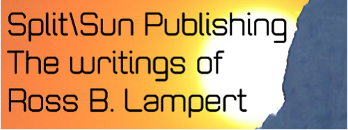
This article begins a series on flashbacks, flash-forwards, and backstory: that ancillary material that fills out a story and its characters by introducing information that doesn’t fit into the piece’s main flow. As with so many of the other subjects I’ve discussed, this topic applies to non-fiction as well as fiction.
Before I get to flashbacks, etc., though, I need a transition: this post on transitions.
What Is A Transition?
A transition is a bridge, a connection between two pieces of a story, such as when the story changes:
- Time, that is, moves into the future or past relative to the current moment;
- Location;
- Point-of-view or focus character, in other words, whose perspective the story is being told through ...










Recent Comments